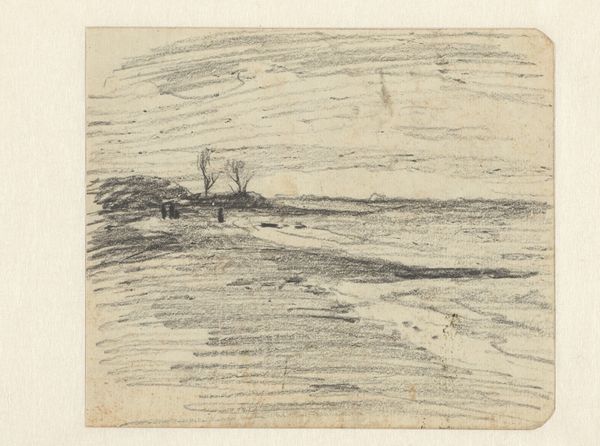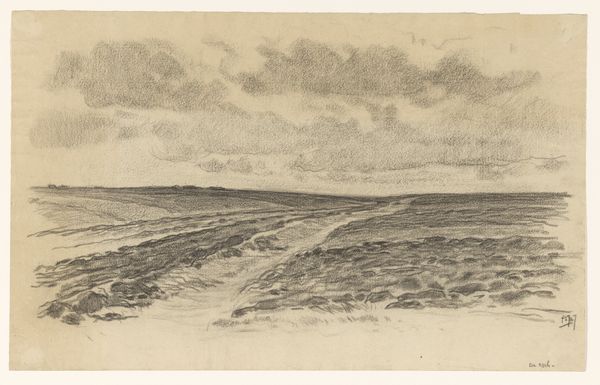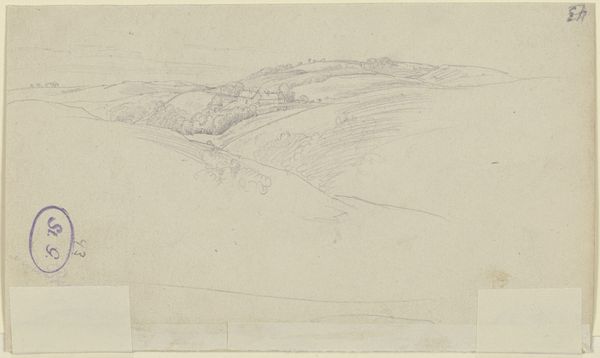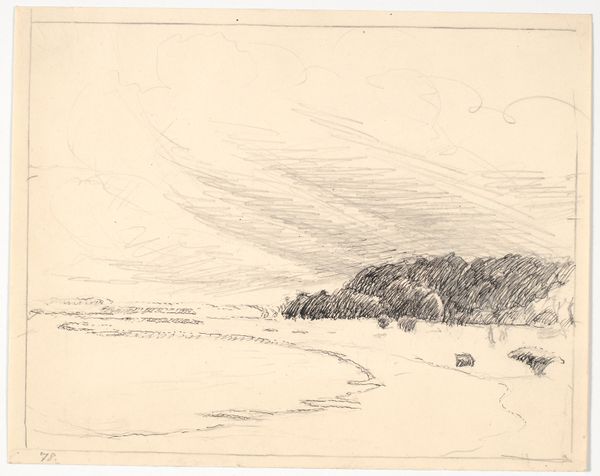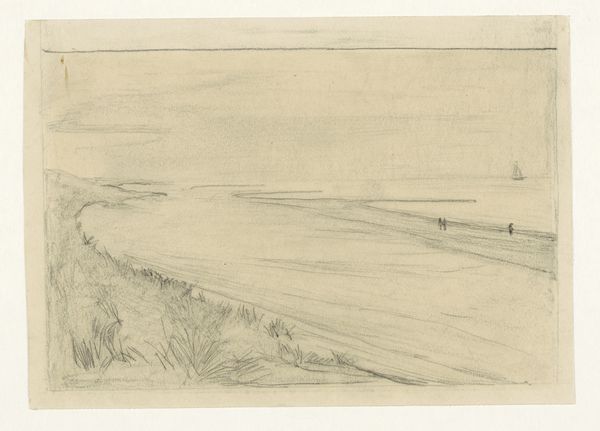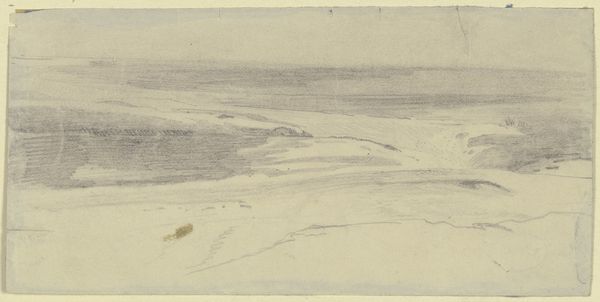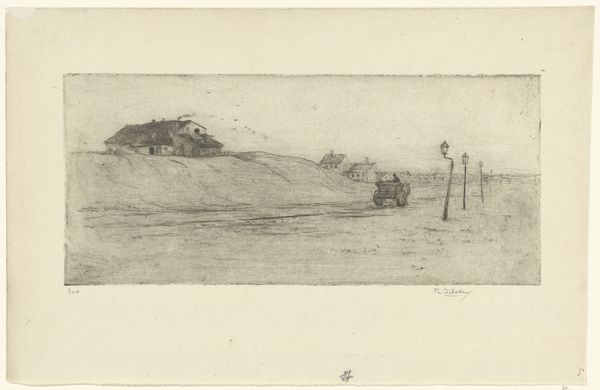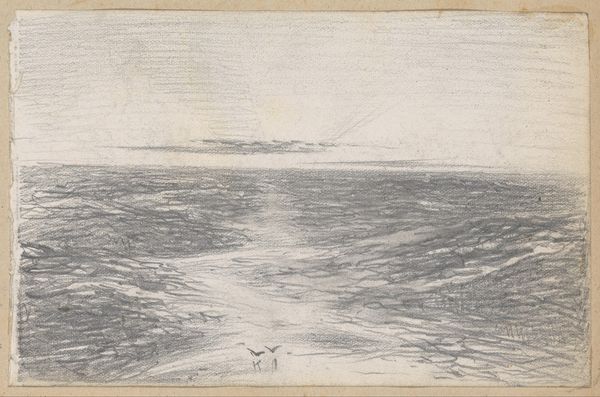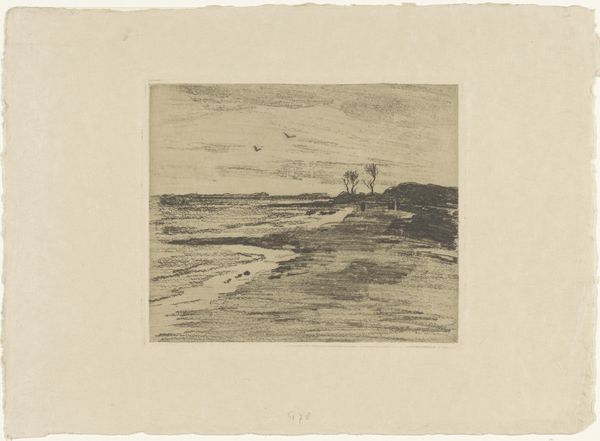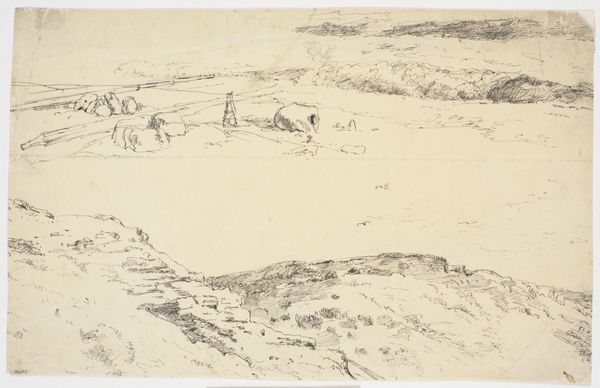
Dimensions: height 137 mm, width 168 mm
Copyright: Rijks Museum: Open Domain
Editor: This drawing, "Landschap met dijk," or "Landscape with Dyke," by Willem Witsen, was created sometime between 1870 and 1923. It's a pencil sketch on paper, and it feels so immediate and intimate, like a page torn from a personal sketchbook. What do you see in this piece, considering the time it was made? Curator: The sketch, precisely because of that feeling of intimacy, provides a fascinating lens through which to examine landscape as a social construct. Consider the historical context: the late 19th and early 20th centuries witnessed rapid industrialization and urbanization in the Netherlands. Witsen, part of the Amsterdam Impressionism movement, wasn't just depicting a landscape, he was documenting a way of life increasingly threatened by these changes. What do you notice about the figures in the drawing? Editor: They seem small and almost indistinct, which makes the landscape feel even more dominant. It emphasizes the scale of nature. Curator: Precisely! And who has access to this nature? The dike isn't merely a physical structure; it's a symbol of human intervention, but also of defense against the water, essential to Dutch identity. Think about land ownership, labor, and the relationship between the wealthy landowners and the working class. Is this an egalitarian space, do you think? Or does it reflect existing power structures? Editor: I guess it’s both. The dyke gives land, therefore power, but everyone, regardless of their social standing, would likely use it, although possibly in different ways. The two small figures on the dyke, are they just passersby? Curator: Possibly. Or, considering the social dynamics of the time, perhaps they are agricultural workers walking on the dyke? This unassuming sketch quietly speaks volumes about labor, land, and the negotiation of space in a rapidly changing world. Editor: I hadn't considered that! Viewing it this way opens up a whole new perspective. Curator: Exactly. And hopefully encourages a continued questioning of the narrative we receive when considering the past.
Comments
No comments
Be the first to comment and join the conversation on the ultimate creative platform.
